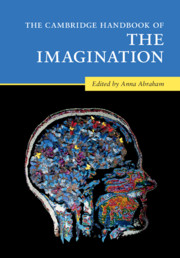Book contents
- The Cambridge Handbook of the Imagination
- The Cambridge Handbook of the Imagination
- Copyright page
- Dedication
- Contents
- Figures
- Contributors
- Acknowledgments
- 1 Surveying the Imagination Landscape
- Part I Theoretical Perspectives on the Imagination
- Part II Imagery-Based Forms of the Imagination
- 12 The Visual Imagination
- 13 Musical Imagery
- 14 Neurophysiological Foundations and Practical Applications of Motor Imagery
- 15 Temporal Mental Imagery
- 16 Emotional Mental Imagery
- 17 Multisensory Perception and Mental Imagery
- 18 Evocation: How Mental Imagery Spans Across the Senses
- Part III Intentionality-Based Forms of the Imagination
- Part IV Novel Combinatorial Forms of the Imagination
- Part V Phenomenology-Based Forms of the Imagination
- Part VI Altered States of the Imagination
- Name Index
- Subject Index
- References
15 - Temporal Mental Imagery
from Part II - Imagery-Based Forms of the Imagination
Published online by Cambridge University Press: 26 May 2020
- The Cambridge Handbook of the Imagination
- The Cambridge Handbook of the Imagination
- Copyright page
- Dedication
- Contents
- Figures
- Contributors
- Acknowledgments
- 1 Surveying the Imagination Landscape
- Part I Theoretical Perspectives on the Imagination
- Part II Imagery-Based Forms of the Imagination
- 12 The Visual Imagination
- 13 Musical Imagery
- 14 Neurophysiological Foundations and Practical Applications of Motor Imagery
- 15 Temporal Mental Imagery
- 16 Emotional Mental Imagery
- 17 Multisensory Perception and Mental Imagery
- 18 Evocation: How Mental Imagery Spans Across the Senses
- Part III Intentionality-Based Forms of the Imagination
- Part IV Novel Combinatorial Forms of the Imagination
- Part V Phenomenology-Based Forms of the Imagination
- Part VI Altered States of the Imagination
- Name Index
- Subject Index
- References
Summary
Mental imagery is perceptual processing that is not triggered by corresponding sensory stimulation in the relevant sense modality. Temporal mental imagery is perceptual processing that is not triggered by temporally corresponding sensory stimulation in the relevant sense modality. We aim to show that temporal mental imagery plays an important role in explaining a number of diverse mental phenomena, from the thickness of temporal experience and the specious present to episodic memory and postdictive perception.
Keywords
- Type
- Chapter
- Information
- The Cambridge Handbook of the Imagination , pp. 227 - 240Publisher: Cambridge University PressPrint publication year: 2020
References
- 3
- Cited by



